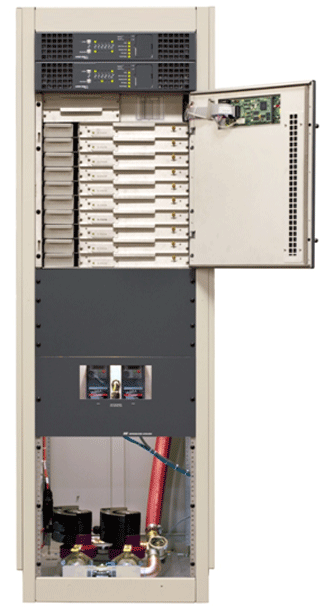GatesAir Maxiva TV Transmitters Offer Low Cost of Ownership

The new Maxiva UHF series comprises the ULXT liquid-cooled model for medium-to-high power broadcasts, and the UAXT air-cooled model for low-to-medium power requirements. GatesAir, formerly Harris Broadcast, based in Cincinnati, Ohio, showed a new TV transmitter at the NAB Show called Maxiva that's based on the company's PowerSmart 3D architecture. The new Maxiva models (there's one for Digital Audio Broadcasts as well) amplify operational efficiencies for over-the-air broadcasters across the UHF and VHF spectrum.
The new transmitter portfolio gives U.S. ATSC broadcasters awaiting new channel assignments a series of cost-reducing models to seamlessly transition to new frequencies following spectrum reallocation.
"Over-the-air broadcasters continue to drive for lower total cost of ownership, from local ATSC broadcasts to large national DVB-T2 networks," said Rich Redmond, chief product officer, GatesAir. "Our next-generation Maxiva transmitters evolve the cost and labor benefits long associated with this brand by driving down size and power consumptions without adversely affecting performance and reliability. In fact, reliability increases through highly stable and redundant designs across power supplies, hot pluggable amplifiers and other advances."
The new Maxiva UHF series comprises the ULXT liquid-cooled model for medium-to-high power broadcasts, and the UAXT air-cooled model for low-to-medium power requirements. Broadband amplifier designs greatly increase power density in both models, reducing transmitter footprints and rack space requirements by up to 75 percent. System maintenance is also simplified through a modular design that results in lighter weight and fewer parts.
In addition, GatesAir said that the design of the Maxiva ULXT and UAXT units promote energy efficiencies with a reduced carbon footprint and lower operating costs (with annual power savings of more than 50 percent possible).
GatesAir is also now shipping its Maxiva VAX air-cooled VHF transmitter, built on the same PowerSmart 3D architecture and delivering similar operational efficiencies. The VAX covers mostly low-to-medium power VHF requirements, and is ideal for broadcasters operating large networks from space-challenged facilities; or local broadcasters filling in coverage gaps across expansive regions. For radio broadcasters, the Maxiva VAX is ideal for DAB radio networks, with advanced inputs including EDI (Encapsulation of DAB Interfaces) to support signal distribution over IP networks.
Beyond operational efficiencies, the unique broadband amplifier design of Maxiva transmitters eliminates the bandwidth limitations associated with previous-generation models. This ensures pristine quality signals for multichannel broadcasters, enabling TV stations and network operators to deliver more services and offer more channels for over-the-air viewers. The ability to add more channels also opens up potential new revenue streams for the broadcaster through increased advertising and promotional opportunities.
Maxiva ULXT and UAXT transmitters also incorporate GatesAir Maxiva M2X exciter technology and real-time adaptive correction technologies (RTAC) to produce stable, high-quality broadcast signals for all digital TV standards (ATSC, ATSC MDTV, DVB-T/T2, ISDB-Tb and more). Software-definable exciter designs ensure that analog broadcasters can seamlessly upgrade to any digital standard in the field. The open interior layouts of Maxiva cabinets also provide plenty of space for dual-exciter configurations, increasing on-air redundancy.
Get the TV Tech Newsletter
The professional video industry's #1 source for news, trends and product and tech information. Sign up below.
